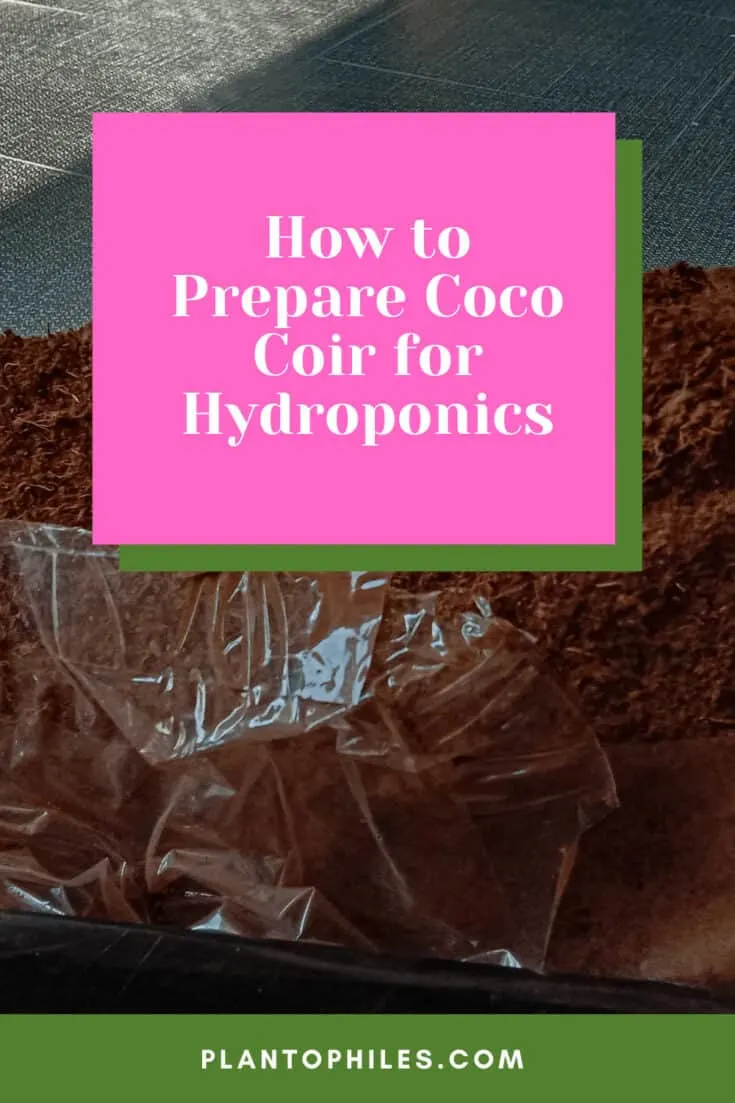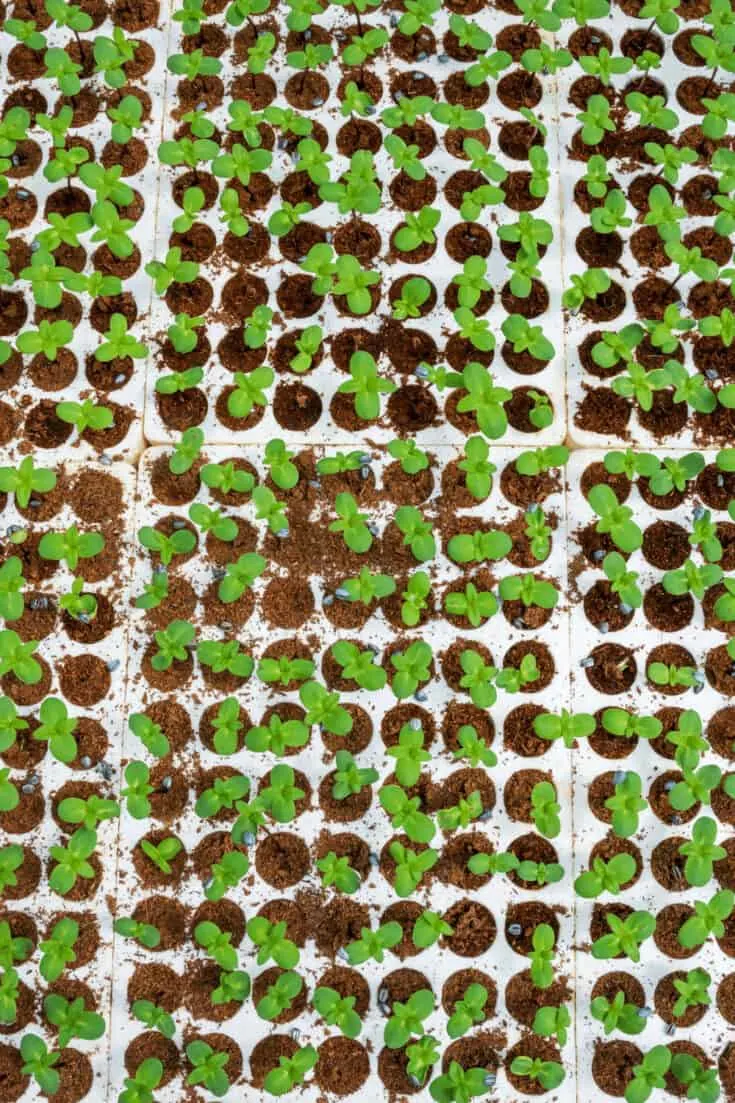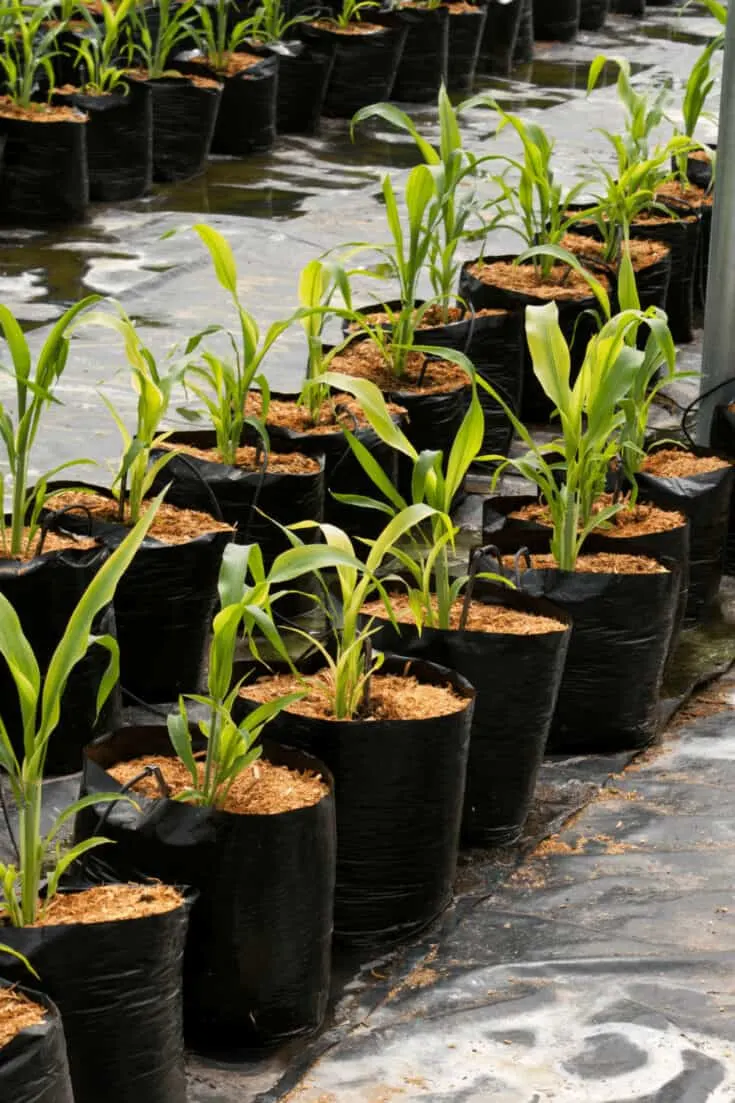Coco coir has become the go-to growing medium for use with hydroponic hobbyists and those who have traditionally used peat moss in their soil mix.
According to Utah State University, the pH of coco coir is closed to 6 and it is quite high in K (potassium).
When using coco coir, you will get the benefits of a hydroponic growing system without the expense of a complete system.
Even in an entire hydroponics system, you can use coco coir to keep the root system of plants stable.
If you are new to gardening or have been growing plants for decades you must know that coco coir can help you grow stronger, healthier plants.
Continue reading to learn how to prepare coco coir for hydroponics and your other plantings as well.
Table of Contents
How to prepare coco coir for hydroponics
To prepare coco coir for hydroponics, place your brick of coco coir in a container, then completely cover it with warm water and let it sit for a minimum of 15 minutes. Once it has absorbed the water, fluff the coco coir until it has the consistency of soil. Coco coir will expand five to seven times its volume once you hydrate it, so think big and choose a larger enough container

How to Prepare Coco Coir for Hydroponics
How to use coco coir
Typically sold in compressed bricks, you must prepare your coco coir before using it for your plants.
Wash coco coir thoroughly first as it is high in salt.
Unwashed coco coir can inhibit your plant’s growth.
To prepare your brick of coco coir to use, soak it in a container large enough to hold it once it expands.
There are no nutrients in coco coir
The biggest problem with coco coir as a plant medium, over soil or a pure hydroponic system, is it is void of nutrients.
Whatever nutrients your plants require, you will need to add. Adding nutrients is fine as long as you know before you grow.
However, preparing the coir can be intimidating for those new to growing plants.
Adding water to it and creating a pile of soil like coconut fiber is one thing.
Adding particular nutrients and getting them balanced is another.
However, the process is pretty straightforward, especially if you use a single product that provides the nutrients your plants need.
Nutrients required by most plants are calcium, magnesium, and potassium.
However, even too much of a good thing can be wrong. Along with too much salt, unbuffered coco coir has too much potassium for most plants.
Also, it doesn’t have enough calcium, boron, chlorine, copper, iron, magnesium, manganese, zinc, and nitrogen. So, you will need to supplement with these nutrients.

Coco Coir is high in salt and needs to be washed before usage
Buffering gives your coco coir nutritional balance
Without buffering, the high salt content of coco coir can kill your plants.
As mentioned, coco coir has nutrients. However, there is too much of some and not enough of the other.
Nutrient mixes made for traditional hydroponic setups may have too much phosphorus and potassium when using coco coir.
Since coco coir has become more widely used, developers of hydroponic supplies have created a nutrient blend that works with coco coir.
So, if you are using unbuffered coco coir, be sure to look for a product made for your particular application.
It’s not that your coco coir won’t grow plants without added nutrients. However, it won’t grow them, mainly if you use them for hydroponics.
Washing coco coir and buffering it is not the same thing.
Although thoroughly washing it before use can rinse some of the excess salt and potassium from it, your coco coir will still need added nutrients.

Coco Coir can increase its volume 5-7 times once wet
Adding perlite for drainage
The good thing about coco coir is that it is easy to hydrate and keep hydrated.
However, the bad thing about coco coir is that it can be too wet of a medium for some plants’ root systems.
So, to use coco for succulents and other plants that need root space, the addition of perlite adds the space your plants need to plant their feet.
In addition, perlite has the same drainage and aeration properties as coco coir.
Mixing the two helps water drain more freely from your plants’ roots.
This helps keep them aerated. Perlite occurs naturally and is little beads of volcanic ash or glass.
It is porous, so it captures and holds water well.
Combining it with coco coir helps your growth medium retain water.
It has neutral pH and is a natural amendment that works well with coco coir so that you can grow healthy plants.
You can add perlite to coco coir in a 10 to 50 percent blend. The ratio will depend on what you intend to grow in the mix.
Frequently Asked Questions About How to Prepare Coco Coir for Hydroponics
Can I buy coco coir that is ready to use?
Coco coir comes in bricks, but loose coco coir is available and coco coir seed starting disks.
Can I use coco coir with potting soil?
You can mix coco coir with potting soil and perlite and use it for your potted plants and flowers.
Will coco coir work for my succulents?
You can use a blend of coco coir, perlite, and pebbles to grow succulents and orchids. Coco coir alone, however, stays too wet for succulents.
Preparing coco coir for use with your plants
There is a lot of chemistry involved with growing plants hydroponically.
Pure hydroponic systems can be expensive.
By using coco coir with a hydroponic system, you are using a medium that feels familiar because it has the weight and texture of soil or peat moss.
Conclusion About How to Prepare Coco Coir for Hydroponics
You don’t need to buy coco coir bricks and reconstitute them either.
Manufacturers saw the need of end-users for buffered coco coir, ready to go from the bag.
So they have formulated products that don’t need to be reconstituted with water or buffered.
The easier a product is to use, the more likely you will grow healthy plants hydroponically.
Pre-buffered and fluffed coco coir can help you succeed from the start.

Daniel has been a plant enthusiast for over 20 years. He owns hundreds of houseplants and prepares for the chili growing seasons yearly with great anticipation. His favorite plants are plant species in the Araceae family, such as Monstera, Philodendron, and Anthurium. He also loves gardening and is growing hot peppers, tomatoes, and many more vegetables.


